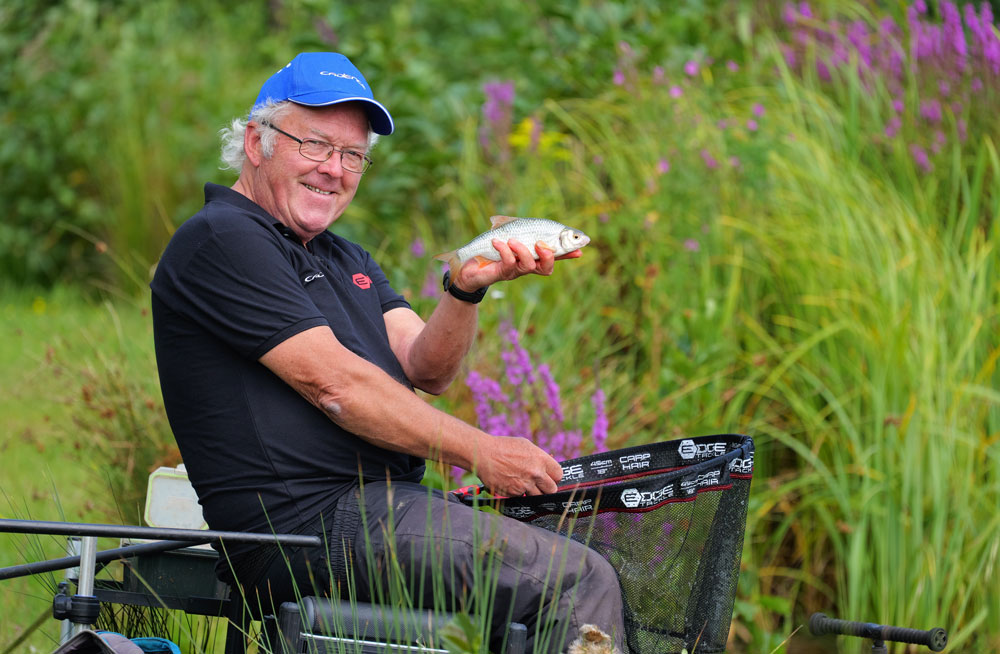Lines with Edge: Dave Coster Looks at Edge Tackle Lines
We sent our ace photographer Chappy out on the bank with Dave Coster, to see exactly how he uses and rates Edge lines.
Picking Right
Having worked in busy tackle shops and for various big angling companies, I have learnt a lot about different types of fishing lines over the years. I ignore any hype because for me, It’s all about how the product performs, not just in the water but also when I check it out with scales and a micrometer. Boffins will say a force testing machine is essential to find the true strength of monofilament and fluorocarbon. It’s a device I have used for development work, but I’ve achieved surprisingly similar results with a basic spring balance. I’m fussy about what I use, needing to know which lines sink or float best, also the honest makes that don’t pretend to be something they are not. Being fooled into believing you are using a diameter that’s stronger than all the competition, when it’s really a lot thicker than what’s printed on its spool, is a con and a waste of time if you can’t buy a bite!
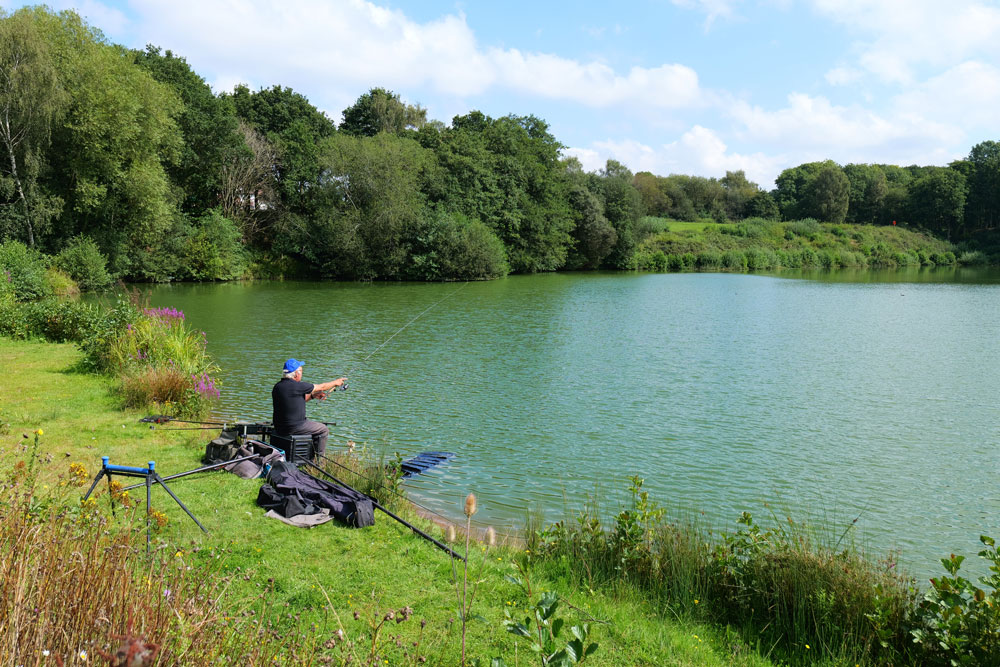
Edge Tackle Sinking Mono
I rate Edge Sinking Mono for feeder and waggler fishing. It does what it says on the label, cutting under the surface and being easy to control, letting you fully concentrate on the job in hand. This olive brown product offers some stretch, without being too elastic on the strike, which is important when casting at range. It’s more robust than many reel lines, not tending to make noisy abrasive sounds as it travels back through the rod rings, which is common with other brands after catching a few fish. Another plus point is the way this mono casts so smoothly, which gains extra distance, without having to push feeder or float rods to their limits. I have, of course, used other sinking lines, discovering a fair few go way beyond their stated breaking strains. I’ve sacked them now because a digital micrometer revealed their diameters were nowhere near what was suggested.
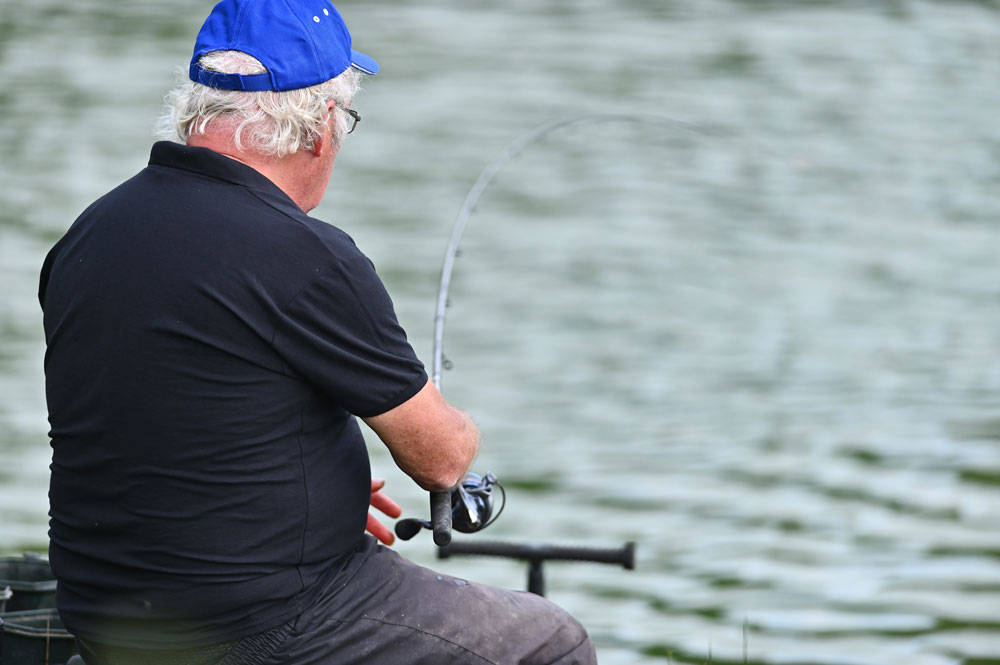
-
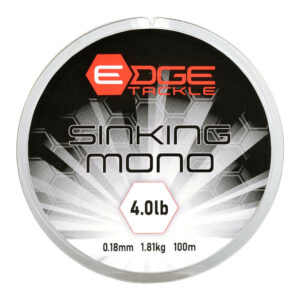 Sinking MonoPrice range: £3.95 through £9.50
Sinking MonoPrice range: £3.95 through £9.50
Edge Tackle Specimen Mono
Edge Sinking Mono covers 4lb to 10lb breaking strains, available on 100m or 300m spools. If you need to step up, there’s also Edge Specimen Mono spanning 6lb to 15lb gauges, available in 300m or 600m lengths. While carp and big fish anglers will love this darker coloured reel line, it also suits long-range feeder work, particularly when using big pit style reels. It’s even more abrasion resistant and is another good sinker. Apart from strenuous method, pellet and hybrid feeder applications, Specimen Mono performs well with carp waggler tactics. Other than pellet wagglers, I would switch to this gear for any other heavily weighted floats, in situations where big fish can be expected during bagging sessions. Specimen makes a great shock leader material, combined with Sinking Mono for feeder fishing. Being darker, it’s easy to see where fish are heading as they near the landing net stage.
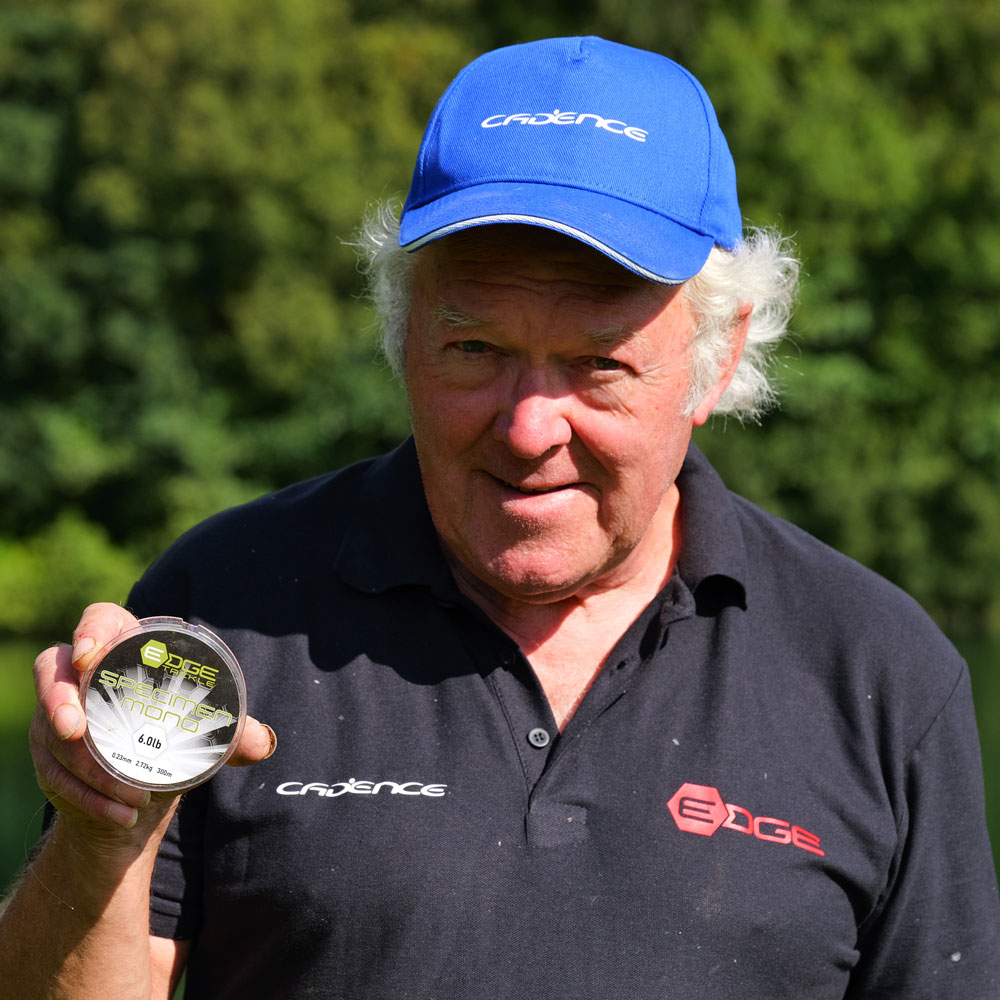
-
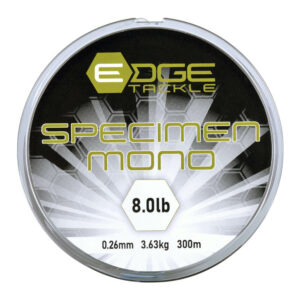 Specimen MonoPrice range: £8.95 through £13.95
Specimen MonoPrice range: £8.95 through £13.95
Edge Tackle Float Mono
A hazy area in the past has been trying to find reel lines that naturally floated. I need a buoyant mono for stick float fishing primarily, although there are some occasions when this type of line works well with wagglers too, such as in flowing water. Trotting wagglers at distance, requires the reel line to be regularly mended off the surface, to keep the float running in a straight line. Edge Float Mono is perfect for use with longer Cadence rods on rivers for this type of fishing. I also use it with whip tackle when there’s no wind, or no need to sink line between the pole tip and float. Being able to lift line cleanly off the surface speeds up hitting bites. Floating mono is less dense than sinking versions, although it is still robust enough to take lots of punishment when bagging up with river species, such as roach, dace, perch, and chub. The light colour is a big bonus when fishing shallow glides.
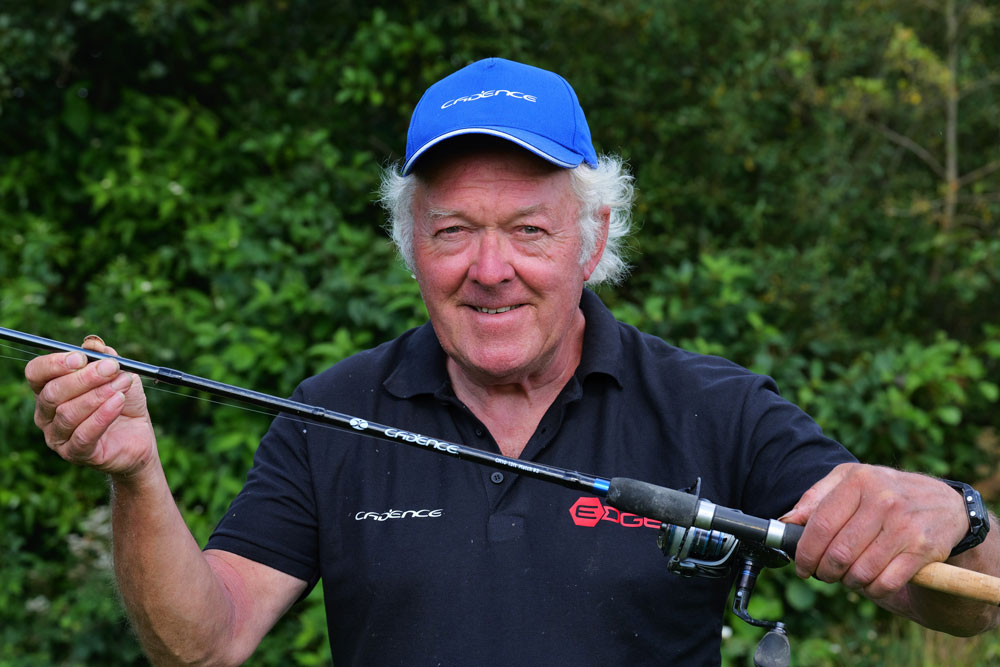
-
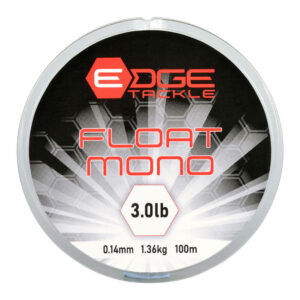 Float MonoPrice range: £3.95 through £9.50
Float MonoPrice range: £3.95 through £9.50
Lines on Top
If you have a close look at the accompanying photograph, you can just see some line laying on the surface above my float. This is a whip rig, with loose fed maggots going in by hand. By using a floating main line, it’s just possible to flick most of it under the surface to counter drift, leaving the important last part just above the float buoyant. This helps to respond to bites faster. Edge Float Mono won’t sink at all if you don’t try to cut it under the surface, but if you do, it hovers and doesn’t go as deep as sinking lines. This is interesting to know when trying to control bottom end floats like wagglers in flowing water, where partially sinking some line, stops it from bowing and pulling the end tackle off course. Having a naturally buoyant mono for top and bottom attached river floats like sticks, chubbers, all-balsas and Avons is a big bonus towards properly controlling them.
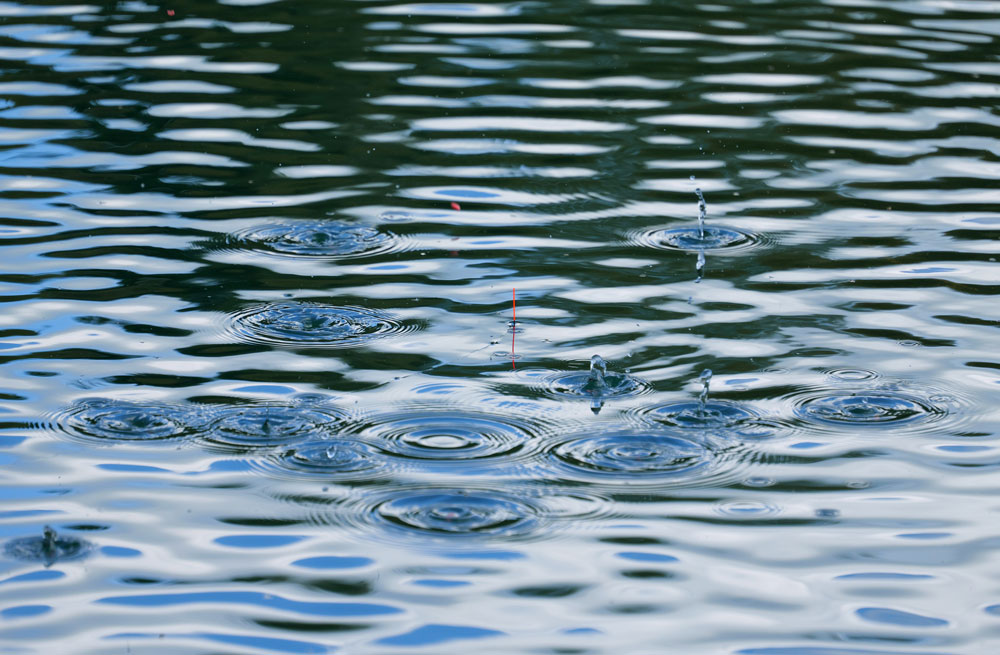
Edge Tackle Premium Mono
Edge Premium Mono is the perfect rig line in my opinion because it doesn’t set out to fool you with its diameters and breaking strains. I mostly use it for hook lengths and as main line for my pole rigs. Some anglers use it as reel line too, liking the way its low diameter casts smoothly and such a long way. As with all types of monofilament, it pays to experiment, to get the kind of performance you want. In my case, I like using hook lengths that are only slightly less strong than the main line being used. There’s a modern trend where pole anglers use much thicker main lines than the trace diameters they attach to their rigs. Thicker main line is more robust and allows a wider choice of hook length gauges, but in my experience a big gap in diameters can see much thicker mono cutting through dramatically finer gauges at the knot, even when attached loop to loop style.
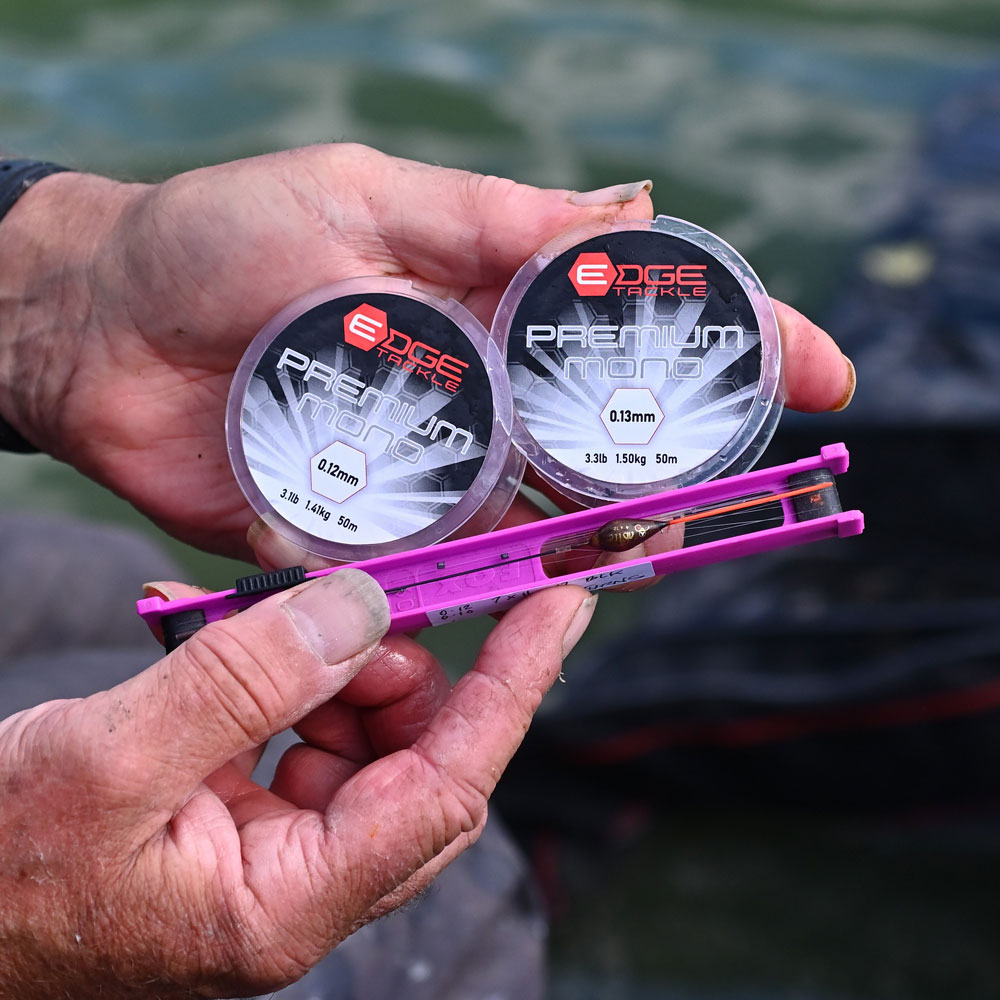
-
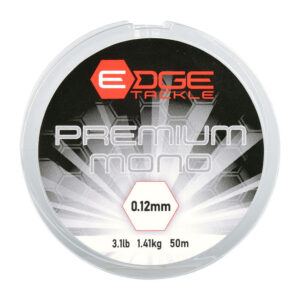 Premium MonoPrice range: £3.65 through £9.95
Premium MonoPrice range: £3.65 through £9.95
Line Diameter Makes a Difference
Carefully gauging line diameters that are being attached to different sizes and gauges of hooks is vitally important. Get it right and plenty of bites will result from beautiful fish like this, but mess it up, and you can end up watching a motionless float or quivertip all day. I was lucky to fish with some great anglers during my Essex County time, also joining more top names on the bank when working on Angler’s Mail features over several decades. The people I met all had one thing in common, being fastidious about the line they used. That meant having plenty of options to scale down, or ramp up, depending on how the fish were responding. There may be situations where line diameter is less crucial, such as when fish are feeding freely. But there are just as many where being able to balance finesse with landing everything you hook, results in those special red-letter days.
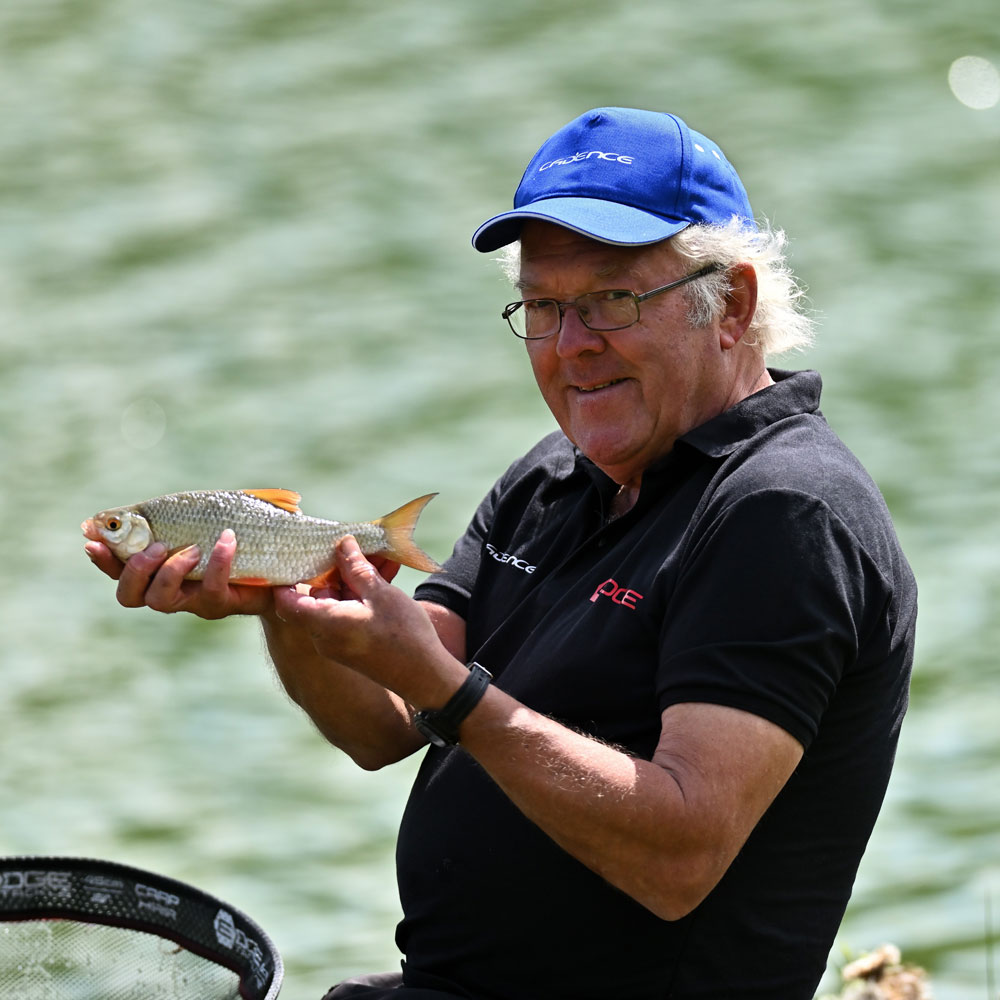
Speed Factor
Match fishing has taught me many lessons about line. After tempting fish into queueing up by clever feeding, which can take a while, you don’t want to spoil everything by having to stop and keep fixing things if the tackle isn’t up to the task. I use fine diameter lines most of the time, requiring them to catch plenty of fish without stressing, coiling or pig-tailing. I also like my line to have a bit of stretch in it, providing some extra shock resistance. But it shouldn’t be too stretchy, which would risk bouncing the hook out on the strike, or not connecting with takes in the first place. If you can catch lots of fish using 0.08 mm or 0.10 mm hook lengths, without experiencing any problems, it’s a good pointer that thicker diameter lines in the same range are likely to be just as reliable. If a low diameter line or fine wire hook constantly needs changing, my best advice is to quickly try something different!
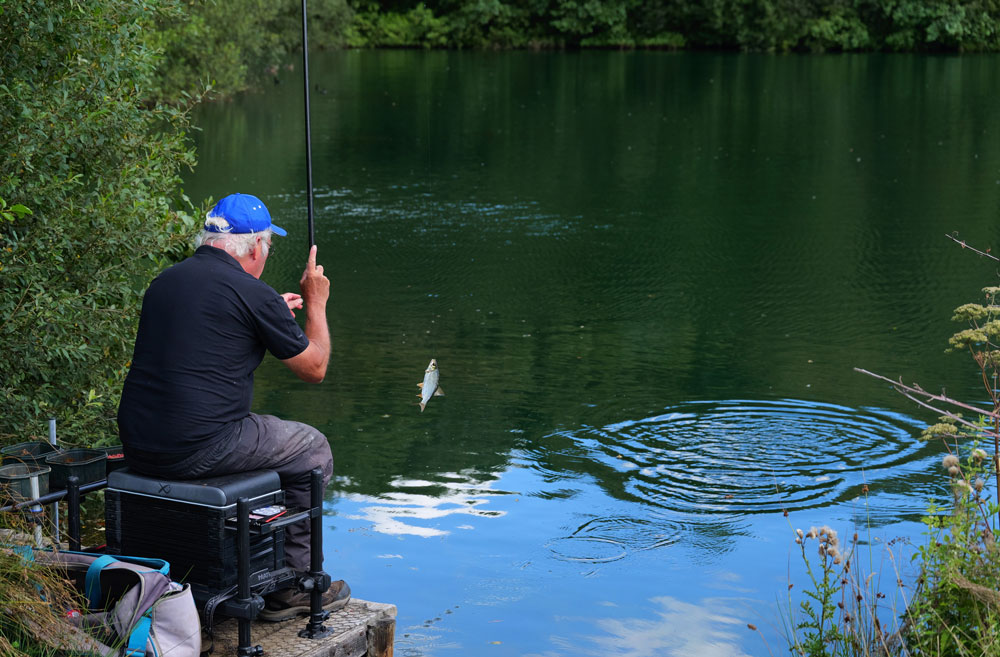
Edge Tackle Fluorocarbon Pure
Fluorocarbon is now widely used as a hook length material for feeder fishing. It’s thicker than most types of line, but being virtually invisible in water, the diameter factor is less important. Fluorocarbon is stiffer and more robust, so you get reduced tangles and less wear when catching lots of fish. There are many other possible uses of Edge Fluorocarbon Pure. A good one, James Robbins showed me, was fixing 60 cms of the 0.16 mm gauge to the end of his whips, which he then attaches his rigs to. Inherent stiffness in the fluorocarbon prevents it from wrapping back around fine carbon flick tips, which can be a big nuisance when you are bagging up at speed. I also like using thicker and stronger gauges of this material for short hook lengths, where its springy nature makes it less likely to tangle back around method, hybrid, or pellet feeders. It’s far more robust than mono, even in thicker grades.
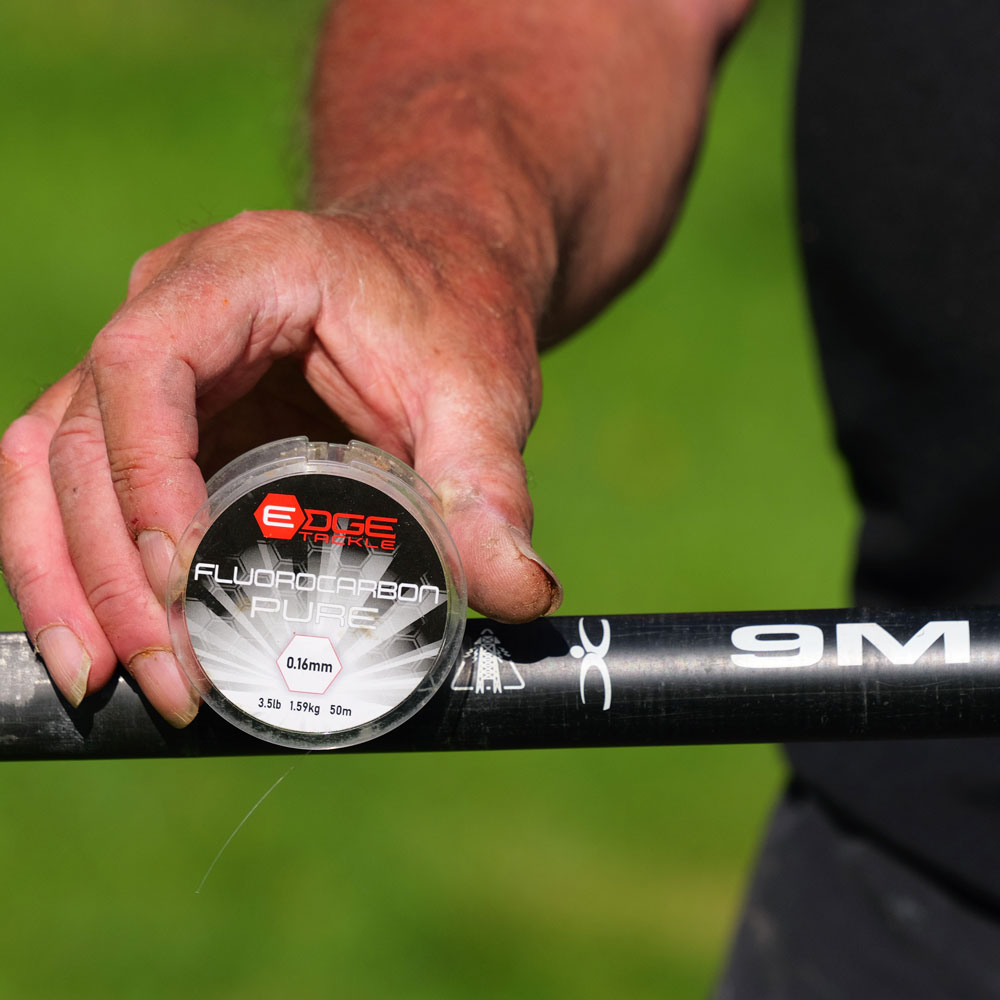
-
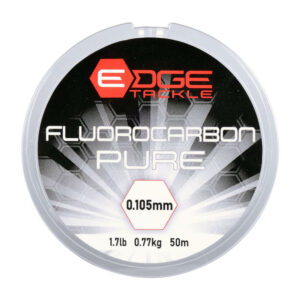 Fluorocarbon Pure£5.65
Fluorocarbon Pure£5.65
Presenting Right
Match fishing experiences have pushed me to extremes with line, in the quest to conjure bites from difficult venues and pegs. But going thinner is not always the solution, bearing in mind you want to land what you hook. Success comes down to carefully matching line diameters with different rigs being used, to make hook baits behave naturally, or at least be presented where they are most likely to be taken. To get hook lengths right, they shouldn’t outmuscle the hook, making everything go too rigid. The only exception to this is when using short traces with in-line feeders. In the latter case, stiff rigs don’t matter so much. This is because your hook bait is being presented close to, or in the middle of a pile of feed, a situation where everything is likely to be hoovered up. It’s when fish have time and space to inspect hook baits, that well-balanced tackle counts most.
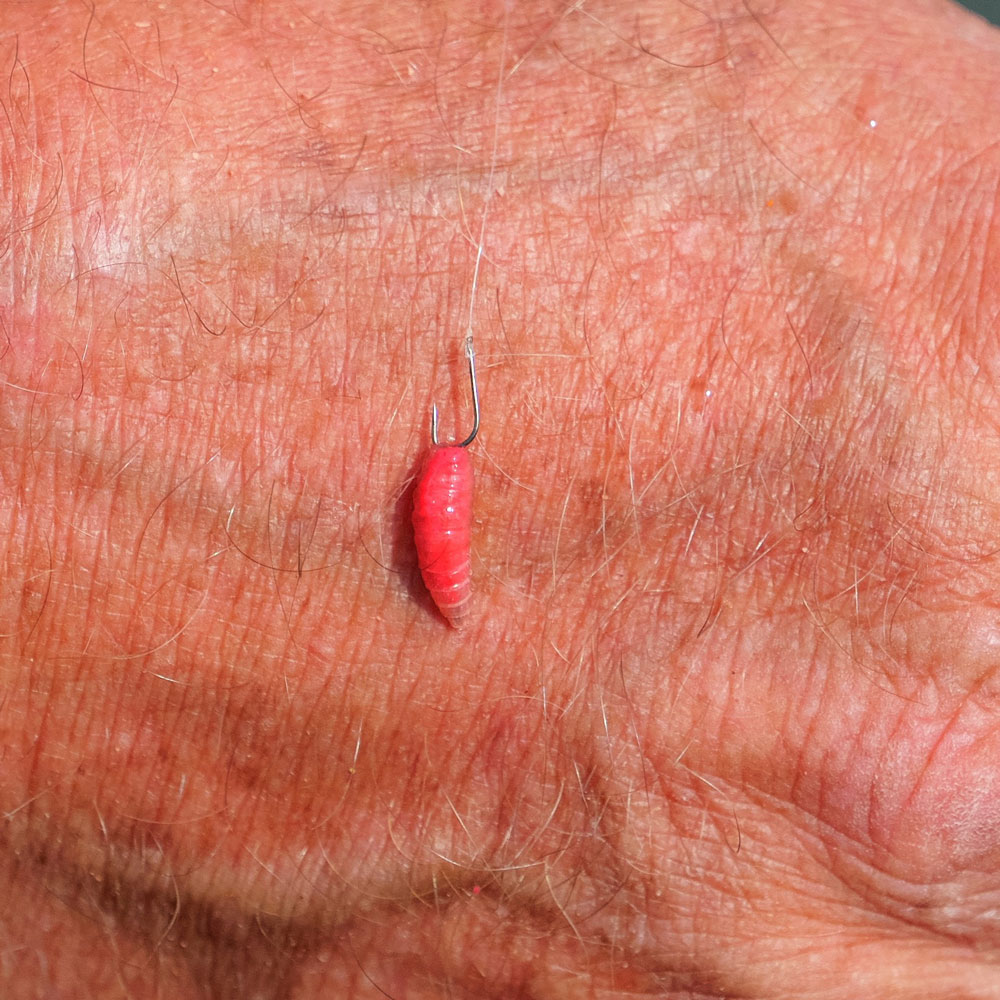
Staying Power
It can take a long time to change direction with line choice because we all have our favourite brands and the cherished stories associated with them. But occasions do crop up that force reconsidering what you are using. One such incidence happened when I was using pellet feeder tactics, combined with strong, short, shop-bought mono hook lengths. The latter were landing big fish okay, but quickly showing signs of stress and coiling up badly. I experimented by tying my own with fluorocarbon instead. Whereas I was getting through several short hook lengths each session previously, suddenly the one I started with was robust enough to last all day. Similar applies to thin rig lines, where I’m constantly looking for those that can withstand lots of punishment. They need to, when constantly moving shot and floats, also having disgorgers constantly run down them to extract hooks.
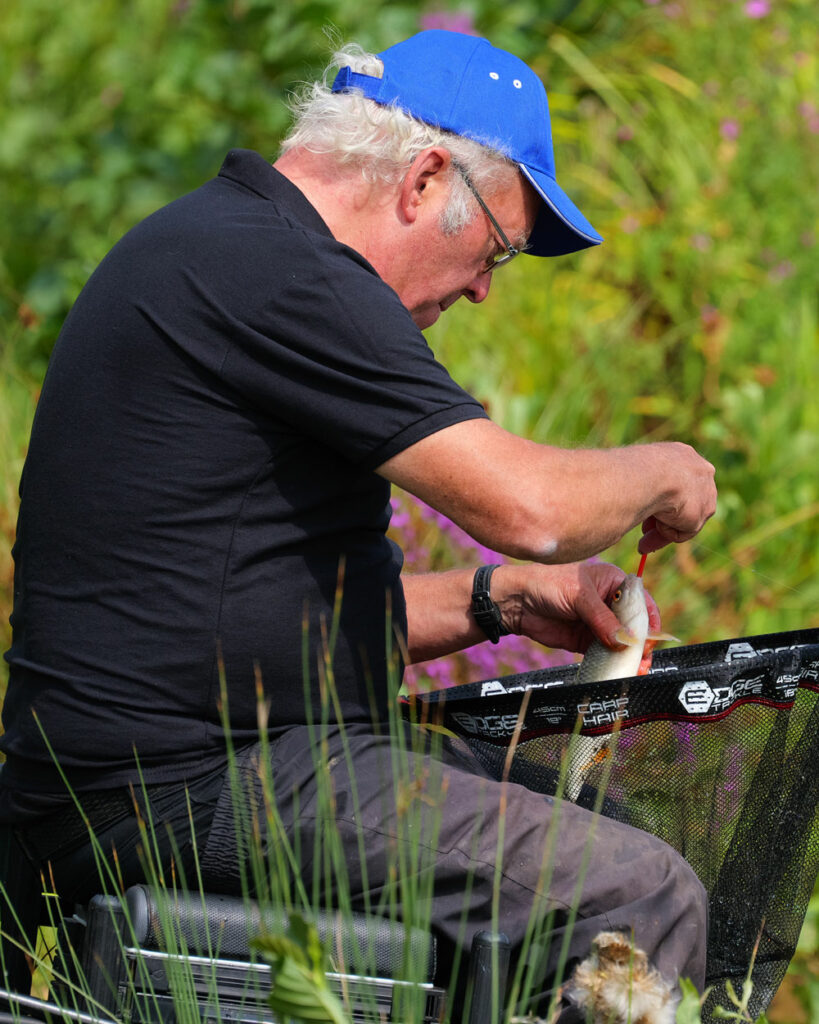
Tinkering Pays
I’m always experimenting with different lines. Tackle development work has taught me to be cautious, thoroughly testing what they are capable of, to find the best for each particular task. Like everyone else, I’m sure, I have been guilty of sticking with favourite brands, possibly a tad too long in some instances. That can lead to missing out, using a product that something new is capable of outperforming. Making up rigs, especially pole orientated ones, is a time-consuming business. That means I don’t intend changing the line on all of them every time something new comes along. Instead, I might try out a new product with running line tackle first, then maybe with just a few pole rigs, before fully committing to it. One thing is for certain, I’m impressed with Edge Lines. You instantly know where you are with them. They are quality and top value for their competitive prices.
